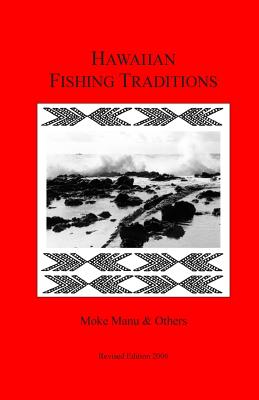You are here
Back to topHawaiian Fishing Traditions (Paperback)
$12.95
Usually Ships in 1-5 Days
Description
"Hawaiian Fishing Legends" an excellent catch for reader (Book Review). Tino Ramirez. Sunday Honolulu Advertiser and Star Bulletin. March 1992.Hawaii was never a paradise, where fruit fell from the trees and fish leapt from the ocean for the sake of man. Before Western contact, between 300,000 to 1 million Hawaiians lived in the islands, gathering food from the mountains; farming the valleys and uplands and harvesting fish and water-life from streams, fishponds, and the ocean. To ensure abundance and the fair distribution of food, these resource areas had to be carefully managed, as editor Dennis Kawaharada points out in the introduction to "Hawaiian Fishing Legends."One prevalent management method was the kapu, or banning of an activity. In Ka'u on the Big Island, for example, a kapu was placed on inshore fishing and gathering during the winter. allowing the marine life to regenerate. To end the kapu, a kahuna, or priest, went to the coast and examined the seaweed, shellfish and fish. Breakers of fishing kapu could be sentenced to death, or killed by a shark, as was a woman who caught too many squid on Oahu's North Shore.When fishing commenced, the social classes went out in turn. according to protocol. Distribution of the catch was also ordered by customary practice, depending on who caught the fish and how many were involved in the effort. Perhaps those required to be most generous were the alii, the ruling class. Kawaharada refers to the greedy chief Ha-la-ela, who drowned when his canoe sank under the weight of all the fish he had demanded from his subjects.Culled from various sources such as Thomas Thrum's "Hawaiian Folk Tales," Abraham Fornander's "Collection of Hawaiian Antiquities," and the Hawaiian language newspaper "Ka Hoku o Hawaii," the legends in this collection celebrate the accomplishments of the ancient fishers, giving us insight into their values.Ku'ula-kai of Maui, for example, devotes himself to fishing, working diligently and taking care of all his relationships, religious and secular. The fishpond he builds feeds the area's alii: when his neighbors have no fish, he freely gives his own.His story demonstrates what happens when the proper order of things is ignored, when the alii and people listen to a troublemaker, forget Ku'ula-kai's righteousness, and kill the great fisherman who fed them. The fish disappear and everyone starves. Only after Ku'ula-kai's surviving son restores his parents' spirits to the coast do the fish return, and the alii is killed by his own appetite. Eventually, Ku'ula-kai is deified as a fishing god.These legends, some translated from the Hawaiian language by Esther Mookini especially for the collection, stand well on their own as stories. The glossary, maps of the legendary sites, and Kawaharada's extensive introduction and notes enrich them. Providing references to other legends and stories associated with the places named, the notes also describe Polynesian fishing practices, from the use of stone images to lure turtles, to the building of log platforms for catching freshwater 'o'opu.The second book of works translated from the Hawaiian and published by Kalamaku Press in two years, "Hawaiian Fishing Legends" is another welcome volume to the body of Hawaiian literature. Besides being a good read, this one makes a lot of material available to scholars, teachers and writers. The proper practice of many of the fishing techniques described here may be forgotten, but the legends' values, characters and metaphors are not.
